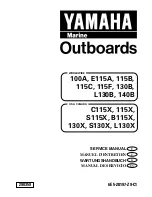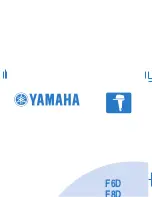
Evaluation Board for 2 W, Filterless,
Class-D Stereo Audio Amplifier
EVAL-SSM2306
Rev. 0
Evaluation boards are only intended for device evaluation and not for production purposes.
Evaluation boards are supplied “as is” and without warranties of any kind, express, implied, or
statutory including, but not limited to, any implied warranty of merchantability or fitness for a
particular purpose. No license is granted by implication or otherwise under any patents or other
intellectual property by application or use of evaluation boards. Information furnished by Analog
alog
may
any
ctive
One Technology Way, P.O. Box 9106, Norwood, MA 02062-9106, U.S.A.
Tel: 781.329.4700
www.analog.com
Fax: 781.461.3113
©2008 Analog Devices, Inc. All rights reserved
Devices is believed to be accurate and reliable. However, no responsibility is assumed by An
Devices for its use, nor for any infringements of patents or other rights of third parties that
result from its use. Analog Devices reserves the right to change devices or specifications at
time without notice. Trademarks and registered trademarks are the property of their respe
owners. Evaluation boards are not authorized to be used in life support devices or systems.
FEATURES
Highly configurable DIP switch settings: input configuration,
coupling techniques, and shutdown control
Optional dc power supply jack (accepts 2.5 V to 5.5 V)
Single-ended and differential input capability
Multiple output interface connection terminals
GENERAL DESCRIPTION
The SSM2306 is a single-chip, dual-channel, Class-D stereo audio
amplifier. It is a fully integrated chip, which means that the appli-
cation circuit requires a minimum of external components. It
comes with a differential mode input port and a high efficiency
H-bridge at the output. When compared to a half-bridge output
stage, a full H-bridge enables direct coupling of the audio power
signal to the loudspeaker, doubling the output voltage swing and
eliminating the need for a large output coupling capacitor. Another
benefit of a full H-bridge is an increase in the maximum output
power by 4× when compared to a half bridge under the same
load impedance. These benefits are particularly useful for low
voltage, battery-powered, portable electronics where energy and
space are limited. The differential mode input stage allows for
canceling of common-mode noise leading to a superior CMRR.
Moreover, the part features a high efficiency, low noise output
modulation scheme that does not require external LC output
filters when attached to an inductive load. The modulation
provides high efficiency even at low output power. Filterless
operation also helps to decrease distortion due to nonlinearities
of output LC filters, thereby delivering better sound quality
and leading to savings in board space and overall cost.
This data sheet describes how to configure and use the
SSM2306 evaluation board. It is recommended that this
data sheet be read in conjunction with the
data
sheet, which provides more detailed information about the
specifications, internal block diagrams, and application
guidance for the amplifier IC.
EVALUATION BOARD DESCRIPTION
The SSM2306 evaluation board carries a complete application
circuit for driving two stereo loudspeakers. Figure 1 shows the
top view of the PCB and its layout, and Figure 2 shows the bottom
view of the PCB. The silkscreen layer of the evaluation board is
shown in Figure 7 with other top layers, including top copper,
top solder mask, and multilayer vias. Figure 8 shows the top silk-
screen layer only. There are no components on the bottom side;
therefore, there is no bottom silkscreen layer. Figure 9 shows
the top layers without the silkscreen layer. Figure 10 shows the
bottom layers, including bottom copper, bottom solder mask,
and multilayer vias. Figure 11 shows the mirrored bottom layers.
The bill of materials (BOM) is provided in Table 4.
06
85
6-
0
01
06
85
6-
0
02
Figure 1. SSM2306 Evaluation Board
Figure 2. SSM2306 Evaluation Board, Bottom View
.


























